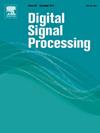Prediction model for newly-added sensors to ocean buoys: Leveraging adversarial loss and deep residual LSTM architecture
IF 2.9
3区 工程技术
Q2 ENGINEERING, ELECTRICAL & ELECTRONIC
引用次数: 0
Abstract
Adding new sensors to ocean buoys can extend their measurement range. However, due to the lack of historical data, the prediction model for the newly-added sensors suffers from the difficulty of training. Traditional pre-training methods simply use the same type of labelled data from other sea areas as pre-training data, failing to take into account the distributional differences between the features of data from different regions, so that the pre-training effect still has a large space to rise. Aiming at the above problems, this paper proposes a prediction model for newly-added sensors to ocean buoys based on adversarial loss and depth residual Long Short Term Memory. Firstly, this paper constructs a prediction model based on deep residual Long Short Term Memory. Then, the pre-training effect is improved by introducing adversarial loss in the loss function of the pre-training task. Finally, the model performance is validated on buoy monitoring data in the nearshore waters of Beihai City, Guangxi Province. The results showed that the pre-training effect was significantly improved with the introduction of adversarial loss compared to the traditional pre-training method.
海洋浮标新增传感器的预测模型:利用对抗损失和深度残差 LSTM 架构
在海洋浮标上增加新的传感器可以扩大其测量范围。然而,由于缺乏历史数据,新增加传感器的预测模型难以训练。传统的预训练方法简单地使用其他海域的同类型标注数据作为预训练数据,未能考虑不同区域数据特征的分布差异,预训练效果仍有较大的上升空间。针对上述问题,本文提出了一种基于对抗损失和深度残差长短期记忆的海洋浮标新增传感器预测模型。首先,本文构建了基于深度残差长短期记忆的预测模型。然后,通过在预训练任务的损失函数中引入对抗损失来提高预训练效果。最后,在广西北海市近岸水域的浮标监测数据上验证了模型的性能。结果表明,与传统的预训练方法相比,引入对抗损失后,预训练效果显著提高。
本文章由计算机程序翻译,如有差异,请以英文原文为准。
求助全文
约1分钟内获得全文
求助全文
来源期刊

Digital Signal Processing
工程技术-工程:电子与电气
CiteScore
5.30
自引率
17.20%
发文量
435
审稿时长
66 days
期刊介绍:
Digital Signal Processing: A Review Journal is one of the oldest and most established journals in the field of signal processing yet it aims to be the most innovative. The Journal invites top quality research articles at the frontiers of research in all aspects of signal processing. Our objective is to provide a platform for the publication of ground-breaking research in signal processing with both academic and industrial appeal.
The journal has a special emphasis on statistical signal processing methodology such as Bayesian signal processing, and encourages articles on emerging applications of signal processing such as:
• big data• machine learning• internet of things• information security• systems biology and computational biology,• financial time series analysis,• autonomous vehicles,• quantum computing,• neuromorphic engineering,• human-computer interaction and intelligent user interfaces,• environmental signal processing,• geophysical signal processing including seismic signal processing,• chemioinformatics and bioinformatics,• audio, visual and performance arts,• disaster management and prevention,• renewable energy,
 求助内容:
求助内容: 应助结果提醒方式:
应助结果提醒方式:


